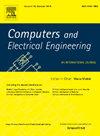Modeling the future: Mathematical insights for smart grid 3.0
IF 4
3区 计算机科学
Q1 COMPUTER SCIENCE, HARDWARE & ARCHITECTURE
引用次数: 0
Abstract
The synergistic integration of Metaverse, Digital Twin (DT), and Blockchain technologies is redefining the framework of smart grids (SGs) and establishing the foundation for the revolutionary phase of Smart Grid 3.0 (SG 3.0). This advancement offers unique opportunity to create robust convergence models that include the Metaverse, Digital Twins, and Blockchain, allowing an authentic depiction of the SG 3.0 environment in the complex interaction between customers and utilities. This advanced convergence model functions as an exact platform for technical experts, attracting growing interest from both academic and industrial sectors. In this swiftly advancing domain, it is essential to tackle the task of adaptively modifying the SG 3.0 architecture in response to multiple disruptions. The choice of an appropriate convergence model for specific type of disruptions is a critical research concern. Numerous convergence models have been developed in recent literature to address these problems. However, the extensive variety and characteristics of these mathematical models complicate the assessment of their realism and compliance with the SG 3.0 framework. This research presents an innovative mathematical modeling strategy to address these challenges, facilitating the evolution of the SG framework into SG 3.0. Our methodology integrates Metaverse, Digital Twin, and Blockchain technologies, providing a distinctive viewpoint that surpasses existing frameworks in the literature. Finally, this study addresses the essential requirement for clarity on the realism and attributes of mathematical models tailored for SG 3.0, hence pioneering new avenues and advancing knowledge and innovation in the growth of Smart Grids.

建模未来:智能电网3.0的数学见解
Metaverse、Digital Twin (DT)和区块链技术的协同集成正在重新定义智能电网(SGs)的框架,并为智能电网3.0 (SG 3.0)的革命阶段奠定基础。这一进步为创建包括Metaverse、Digital Twins和区块链在内的稳健融合模型提供了独特的机会,允许在客户和公用事业之间的复杂交互中真实地描述SG 3.0环境。这种先进的融合模型作为技术专家的精确平台,吸引了学术界和工业界越来越多的兴趣。在这个快速发展的领域,解决自适应修改SG 3.0架构以应对多种中断的任务至关重要。为特定类型的中断选择合适的收敛模型是一个关键的研究问题。在最近的文献中已经发展了许多收敛模型来解决这些问题。然而,这些数学模型的广泛多样性和特点使评估其现实性和是否符合sg3.0框架变得复杂。本研究提出了一种创新的数学建模策略来解决这些挑战,促进SG框架向SG 3.0的演变。我们的方法集成了Metaverse、Digital Twin和区块链技术,提供了超越文献中现有框架的独特观点。最后,本研究解决了为SG 3.0量身定制的数学模型的现实性和属性清晰化的基本要求,从而开拓了智能电网发展的新途径,推进了知识和创新。
本文章由计算机程序翻译,如有差异,请以英文原文为准。
求助全文
约1分钟内获得全文
求助全文
来源期刊

Computers & Electrical Engineering
工程技术-工程:电子与电气
CiteScore
9.20
自引率
7.00%
发文量
661
审稿时长
47 days
期刊介绍:
The impact of computers has nowhere been more revolutionary than in electrical engineering. The design, analysis, and operation of electrical and electronic systems are now dominated by computers, a transformation that has been motivated by the natural ease of interface between computers and electrical systems, and the promise of spectacular improvements in speed and efficiency.
Published since 1973, Computers & Electrical Engineering provides rapid publication of topical research into the integration of computer technology and computational techniques with electrical and electronic systems. The journal publishes papers featuring novel implementations of computers and computational techniques in areas like signal and image processing, high-performance computing, parallel processing, and communications. Special attention will be paid to papers describing innovative architectures, algorithms, and software tools.
 求助内容:
求助内容: 应助结果提醒方式:
应助结果提醒方式:


